Sports
/ArcaMax
Sergei Bobrovsky shuts out Maple Leafs as Panthers even up series
MIAMI — Sergei Bobrovsky recorded his second shutout of the postseason, stopping all 21 shots he faced from the Toronto Maple Leafs on Sunday as the Florida Panthers won 2-0 in Game 4 of their second-round series at Amerant Bank Arena.
With the win, Florida has evened the best-of-seven series at 2-2 after dropping the first two games of the ...Read more
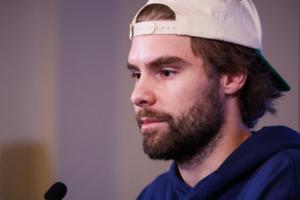
Eduardo A. Encina: Brandon Hagel's post-concussion comments put spotlight on tough topic for NHL
TAMPA, Fla. — We watched the hit that ended Brandon Hagel’s season. We heard the emotion in the Lightning forward’s voice when he talked about the concussion that resulted from it. We read Florida defenseman Aaron Ekblad’s explanation. We saw Hagel’s hit on Panthers captain Aleksander Barkov. And we listened to Hagel’s acknowledgment...Read more
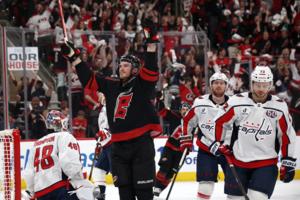
Luke DeCock: Hurricanes weathered Capitals' storm, then became it -- and maybe broke their spirit
RALEIGH, N.C. — During the first postseason go-round of what we used to call a Southeast Division Showdown, Alex Ovechkin probably scores twice in the first period Saturday and the Carolina Hurricanes spend Sunday figuring out what went wrong.
But 2025 isn’t 2019. There’s only so much the Washington Capitals can do now. And when their ...Read more
Golden Knights back in series vs. Oilers on miraculous goal in final second of Game 3
EDMONTON, Alberta — Right wing Reilly Smith scored twice, including the game-winning goal with 0.4 seconds remaining, to give the Golden Knights an unthinkable 4-3 win over the Edmonton Oilers in Game 3 of the second-round series at Rogers Place on Saturday.
The Oilers lead the series 2-1. Game 4 is in Edmonton on Monday.
Oilers captain ...Read more
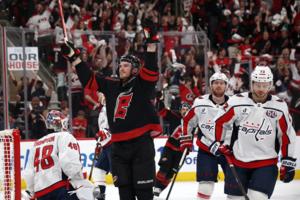
Hurricanes dominate Capitals on home ice to win Game 3, take 2-1 series lead
RALEIGH, N.C. — When it comes to the Stanley Cup playoffs, Carolina Hurricanes coach Rod Brind’Amour likes to say, “You live and die every day.”
Win a game and you’re living large. Lose and it can seem too harsh. Such is the ebb and flow when the games mean so much.
The Hurricanes enjoyed that winning feeling again Saturday, surging ...Read more
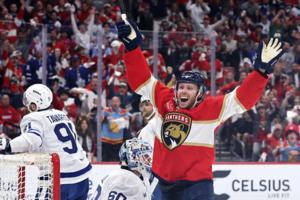
Greg Cote: Sudden death to new life: Panthers' OT win over Leafs saves season (for now)
The Florida Panthers were facing more than sudden-death overtime Friday night. They were facing their season all but suddenly dying.
The overtime ended with the horn blasting happily, with rats on the ice, and with jubilant teammates hugging winning-goal scorer Brad Marchand.
And the season lives, hope lives, for the reigning Stanley Cup ...Read more
Panthers beat Maple Leafs in overtime to keep series hopes alive
SUNRISE, Fla. — The Florida Panthers have life.
Brad Marchand scored the game-winning goal with 4:33 left in overtime as the Panthers beat the Toronto Maple Leafs, 5-4, on Friday in Game 3 of their second-round Stanley Cup playoffs series at Amerant Bank Arena
The Panthers trail the best-of-7 series 2-1, with Game 4 at 7:30 p.m. Sunday in ...Read more
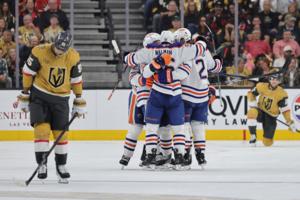
Knights rally, but fall to Oilers in OT to go down 2-0 in series
LAS VEGAS — Leon Draisaitl scored with 4:40 remaining in overtime and the Edmonton Oilers defeated the Vegas Golden Knights 5-4 in Game 2 of their second-round series at T-Mobile Arena on Thursday.
The Oilers lead the best-of-seven series 2-0. Game 3 is at Rogers Place on Saturday.
The Knights lost after killing a five-minute major penalty ...Read more
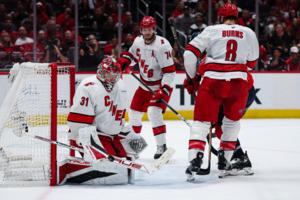
Capitals pull even with Hurricanes after win in Game 2, knot series at 1-1
Tom Wilson threw down the gauntlet Thursday after the Washington Capitals’ morning skate.
“We’re a tough team to reckon with and we have to show that,” the Caps power forward said.
It wasn’t just talk. Wilson had a goal and assist and was the Caps’ best player in Game 2 of the Stanley Cup playoff series as Washington took a 3-1 ...Read more
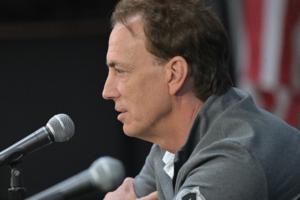
Sean Keeler: Mikko Rantanen hopefully taught Avalanche, Joe Sakic lesson: Don't trade Stars for scrubs
DENVER — You don’t trade Stars for scrubs. During the worst Game 7 loss in Colorado Avalanche history, Martin Necas and Brock Nelson were passengers from start to Finnish.
“We felt we had to get deeper, and not only for this season’s team, but moving forward,” Joe Sakic said Tuesday afternoon when asked about America’s newest Avs-...Read more
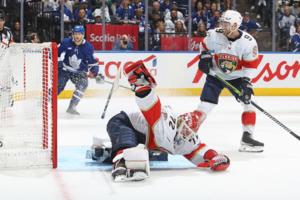
Panthers fail to sustain momentum and fall to 0-2 in second-round series against Maple Leafs
The Florida Panthers had multiple opportunities to generate consistent momentum on Wednesday, plenty of chances to put their stamp on this series against the Toronto Maple Leafs after a rough start to the series two days earlier.
But each time Florida made a push, Toronto answered.
And now, the Panthers have been on the wrong end of the result...Read more
Was this Lightning team really playoff-ready?
TAMPA, Fla. — At Friday’s end-of-season postmortem, general manager Julien BriseBois read off the many ways in which the Lightning excelled during the regular season.
They were the NHL’s top scoring team and ranked fourth in scoring defense. Despite the loss of Steven Stamkos in the left circle, their power play was fifth-best. A penalty ...Read more
Golden Knights blow early lead, drop Game 1 to Oilers
The Golden Knights couldn’t have scripted a better start against the Edmonton Oilers.
Their top line got the better of the Oilers’ superstar duo early. They jumped out to a two-goal lead. Even when Edmonton made its push, the Knights stayed poised.
But the team’s offense went cold the final 40 minutes. That allowed the Oilers to take ...Read more
Hurricanes outlast Capitals in OT, nab home-ice advantage after Game 1 win
The Carolina Hurricanes could have easily been frustrated Tuesday.
The Canes controlled much of the opening game of their Stanley Cup playoff series with the Washington Capitals, but had to play from behind while trying to find a way to get the puck past Caps goalie Logan Thompson.
But the Canes stuck with their game, maintained their patience...Read more
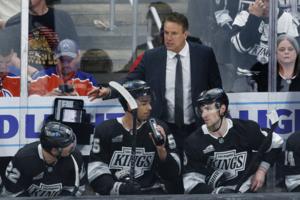
Luc Robitaille expects Jim Hiller to return as Kings' coach
LOS ANGELES — A day after parting ways with his general manager, Kings president Luc Robitaille expressed confidence in his head coach, saying he expected Jim Hiller would be back with the team next season. Yet the final decision, he added, would be with the new GM.
“Your general manager, you want to give him the freedom. You don’t want ...Read more
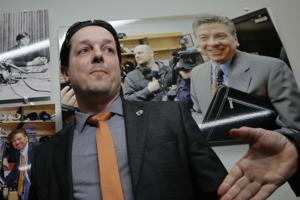
Mike Sielski: The Flyers' journey back to relevance got harder after the NHL draft lottery
PHILADELPHIA — The most revealing moment of the most riveting game of this NHL postseason didn’t feature a player on the ice or a coach on the bench. It, of course, did not feature the Flyers, either, but they were connected to the moment, if you care about them.
On Sunday night, in Game 7 of the Winnipeg Jets-St. Louis Blues first-round ...Read more
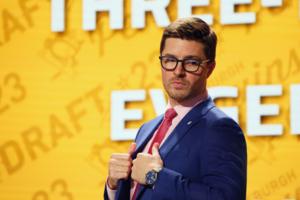
Jason Mackey: Kyle Dubas' coaching decision with Penguins a palate cleanser for Pittsburgh sports
PITTSBURGH — Kyle Dubas' plan has occasionally been difficult to decipher, the Penguins' president of hockey operations toggling between urgency and patience when describing what exactly he's trying to do, but it's hard to get too upset over any of it.
One, the needle Dubas is trying to thread — retooling on the fly, managing some lousy ...Read more
Panthers sloppy early, then rally falls flat in Game 1 loss to Maple Leafs
The tone was set from the opening shift.
The Toronto Maple Leafs’ Max Pacioretty won a board battle behind the Florida Panthers’ net and flicked the puck around to William Nylander as he glided down the right board. Nylander drove into the right circle and, aided by a timely screen from John Tavares, fired a wide-angled shot that got past ...Read more
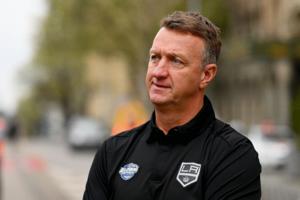
Kings general manager Rob Blake steps down in wake of latest playoff ouster
LOS ANGELES — The Kings and long-embattled general manager Rob Blake have mutually agreed to part ways, the team announced Monday, four days after the team's fourth consecutive first-round playoff loss to the Edmonton Oilers.
"On behalf of the entire organization, I would like to thank Rob for his dedication to the L.A. Kings and the passion ...Read more
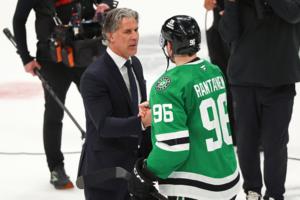
Sean Keeler: Avalanche should thank coach Jared Bednar for his service, then replace him with Denver's David Carle
DENVER — Stan Kroenke doesn’t own the Colorado Avalanche. The Dallas Stars do.
Whiny Pete DeBoer does. Still. After all these years. After all those trades. After all those draft picks.
If not now, when?
The Avs were up 2-0 in the third period on Saturday night, laughing old demons away while the fans partied back home. With about eight ...Read more
Popular Stories
- Eduardo A. Encina: Brandon Hagel's post-concussion comments put spotlight on tough topic for NHL
- Sergei Bobrovsky shuts out Maple Leafs as Panthers even up series
- Greg Cote: Sudden death to new life: Panthers' OT win over Leafs saves season (for now)
- Golden Knights back in series vs. Oilers on miraculous goal in final second of Game 3
- Luke DeCock: Hurricanes weathered Capitals' storm, then became it -- and maybe broke their spirit





